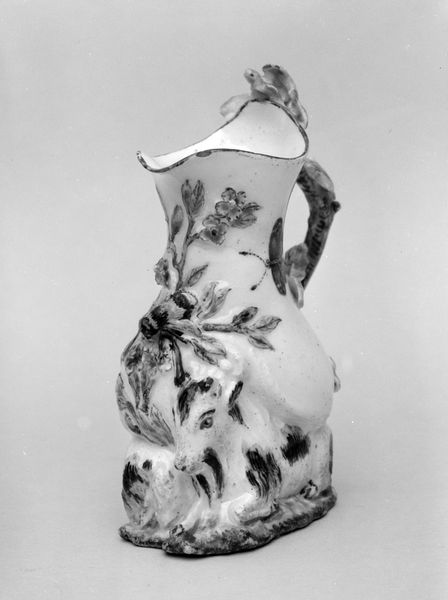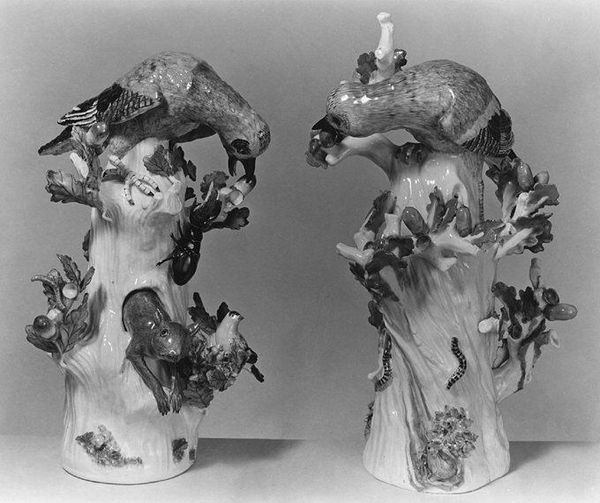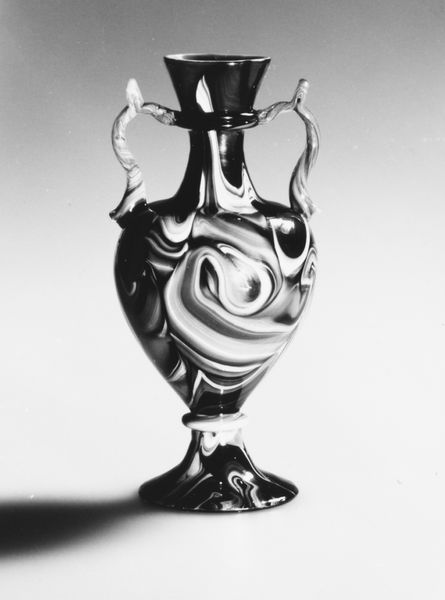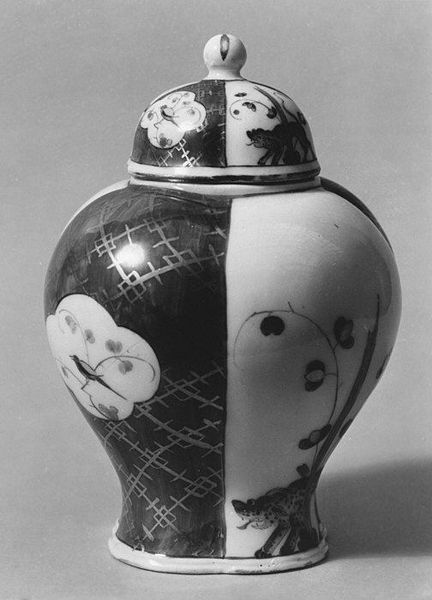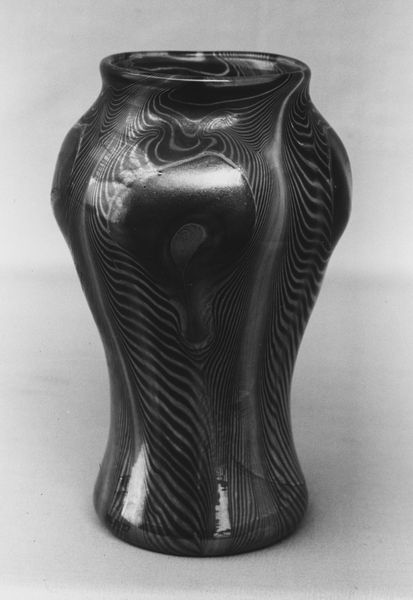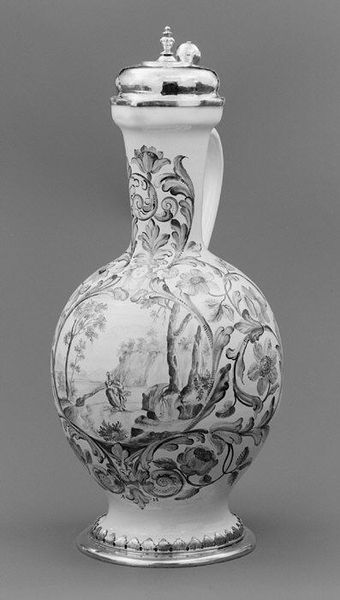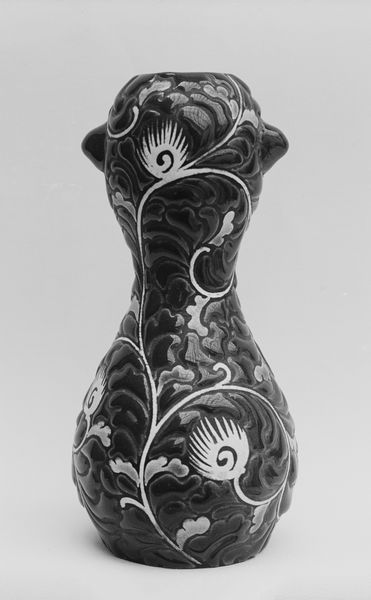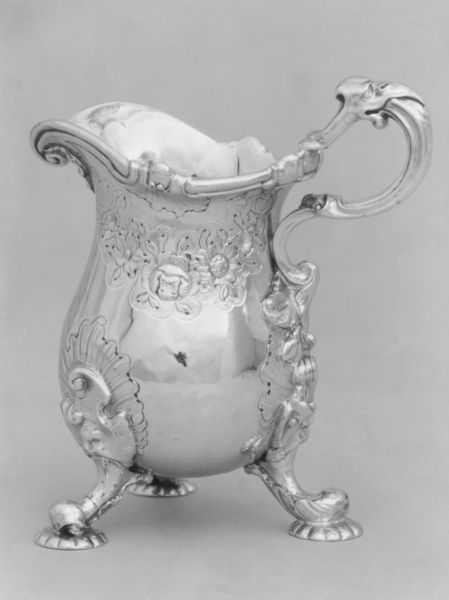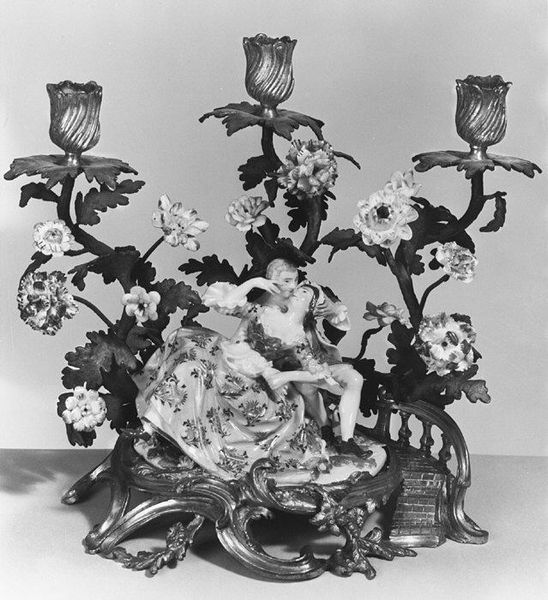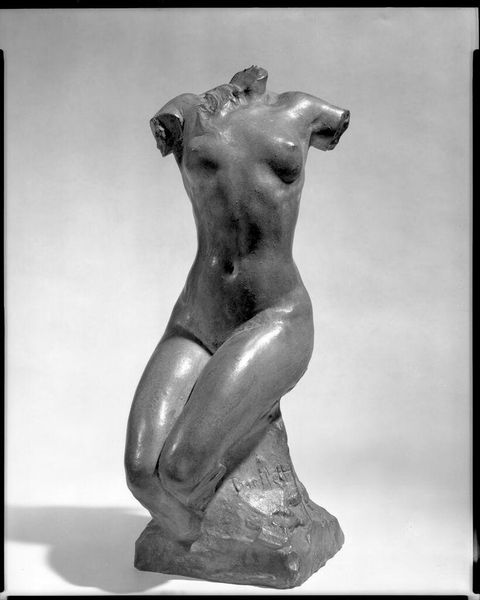
ceramic, earthenware, sculpture
#
sculpture
#
ceramic
#
earthenware
#
sculpture
#
black and white
#
monochrome
#
decorative-art
#
rococo
#
monochrome
Dimensions: H. 3 11/16 in. (9.4 cm)
Copyright: Public Domain
This cream jug was made at the Chelsea Factory, likely in the mid-18th century, using molded soft-paste porcelain, and decorated with enamel. The jug's body is formed with an earthy base, contrasting with the white top section adorned with relief-molded flowers and painted leaves. The handle imitates a twig, adding to the naturalistic theme. Chelsea porcelain was known for its imitative brilliance, chasing after the success of Meissen in Germany, and ultimately responding to the insatiable demand for luxury goods by the British elite. The factory relied on skilled modelers and painters, many of them migrants from the continent, and the overall quality of the work reflects a sophisticated division of labor. In the context of burgeoning British colonialism, this object exemplifies the drive to accumulate wealth and manufacture status, turning clay and skillful labor into a token of refinement. Consider how the jug’s appeal lies in its fusion of naturalism and artifice, and how this reflects the social ambitions of its time.
Comments
No comments
Be the first to comment and join the conversation on the ultimate creative platform.
